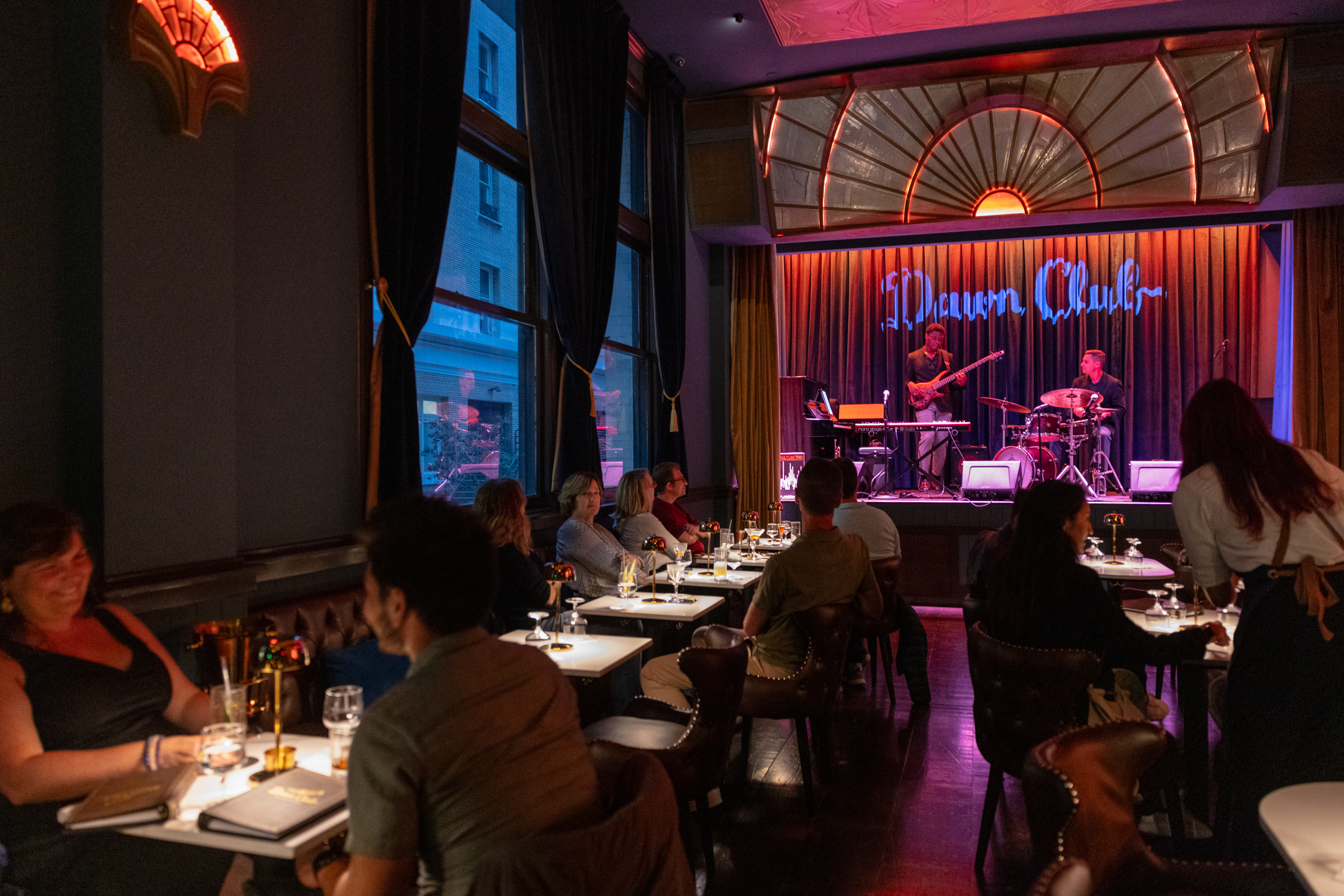When San Francisco’s office drones are away, the partyers will play.
That’s the upshot of cellphone data analyzed by University of Toronto researchers to determine how dozens of downtowns across the U.S. are recovering from the pandemic.
Segmenting the data by the time of the day gives insight into which specific groups are driving the district’s comeback locally. During work hours, San Francisco’s downtown activity was tagged at a mere 56.6% of pre-pandemic levels. However, after-hours activity has jumped up to 94.8% of that baseline.
A similar split divides weekdays and weekends, which currently are at 59.6% and 99.4% of pre-pandemic activity, respectively. The new data lends credence to city leaders’ stated strategy of betting heavily on downtown as a nightlife and entertainment hub.
To be sure, part of the contrast is a matter of scale. Back in 2019, San Francisco’s daily work-hour population would balloon to more than 1.1 million people, keeping the city’s economy humming and its office towers full.
Overall, downtown San Francisco’s return is still coming in fits and starts.
The city’s 67.7% overall recovery rate is in the bottom third of the 55 U.S. cities analyzed by University of Toronto researchers, who noted that activity in San Francisco has been highly volatile, ranging from an extremely busy summer last year that gave way to relatively muted winter months.
As remote work has predominated in the wake of the pandemic, San Francisco office vacancy rates continue to break records. Currently, around a third of the city’s office space is unoccupied. Although the commercial real estate market has been buoyed somewhat by interest and investment in AI, the nascent industry still represents a small fish in a very big (and largely empty) pond.
According to data from key card company Kastle Systems, weekly return-to-office numbers for the San Francisco metro area have failed to breach 50% of pre-pandemic levels to date.
Ben Bleiman, the president of the SF Entertainment Commission, is a partner at Harrington’s Bar and Grill in the Financial District, which reopened in March after a more than three-year closure. He said regular business during lunch and happy hour is fairly predictable, with peaks during the middle of the week. After-work-party bookings are picking up as well.
Still, he said, downtown bars make the bulk of their money during daytime hours, and that means overall business is still a ways away from recovery.
“Ninety percent of sales take place during work and happy hour for most spots,” Bleiman said. “So even if after-hours [traffic] is back to 90%, it’s still a drop in the bucket.”
Betting on fun
Perhaps resigned to the fact that the hybrid work shift is largely permanent, city leaders have leaned heavily into moving downtown San Francisco away from its longtime role as a 9-to-5 business destination.
Among the recent moves made by city leaders is the planned designation of the state’s first “Entertainment Zone” on Front Street in the Financial District, which would turn the area into a version of New Orleans’ Bourbon Street by allowing outdoor alcohol sales and consumption during events.
The city also plans to launch a $500,000 program offering up to 20 grants to fund economic revitalization projects related to nightlife or entertainment downtown.
Picking up on this rise in after-hours activity, several new bars and restaurants have launched or opened to take advantage of these off-hour visitors. These range from the opening of the trendy rooftop Japanese-Peruvian restaurant Chotto Matte to the rebirth of the Starlite cocktail lounge at the Beacon Grand hotel.
A number of after-work events and block parties, like the monthly First Thursdays series and the return of the Indian dancing-based Bhangra and Beats Market, have also been put into place with the help of city funding.
Robbie Silver, executive director of the Downtown SF Partnership, said nightlife attractions have proven to be a bright spot for an area still suffering from a dearth of daily office workers.
The Downtown SF Partnership has invested heavily in after-hours events, launching Let’s Glow, a holiday light show, and Drag Me Downtown, a weekly summer pop-up drag showcase.
“I’m hoping a block party mentality will help drive people downtown and also fill in these ground-floor vacancies with new bars, restaurants, dance venues contributing to a new downtown renaissance,” Silver said.
One quibble Silver has with statistical measures of downtown recovery is using 2019 as a point of comparison to the current situation. With the larger macro changes in the economy, Silver said the simple fact is that downtown simply won’t come back in the same way any time soon.
“If we keep comparing ourselves to 2019, we’re going to set ourselves up for failure,” Silver said. “If we need a baseline, let’s use the year prior to see actually how much progress we’re making.”
